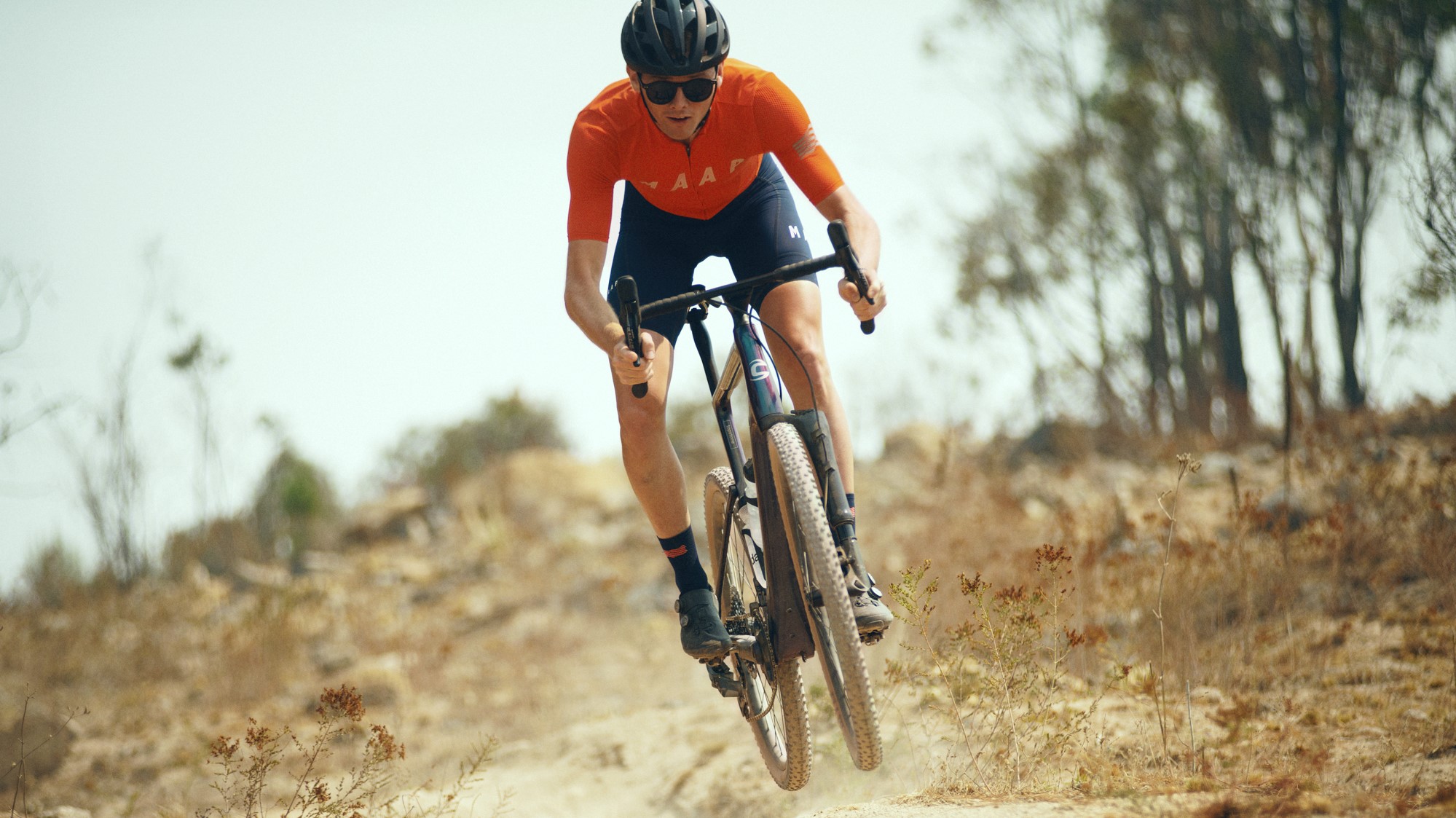Gravel bike vs mountain bike: understanding the differences
Both gravel and mountain bikes are designed to go off-road, but they are purposed for very different riders - we explain the differences

Mountain bike ownership has, for many, been a passport to healthy mindful escapism.
Solving the mystery of that forest singletrack, discovering how deep it goes into the woods, conquering a series of rolling hills linked by a testing gradient of gravel road, the desire for exploration is what drives a great deal of the cycling obsession for many. Escaping our immediate surroundings, exploring where vehicle traffic cannot intimidate or threaten you on a ride.
But what is the ideal bike configuration for your off-road or all-terrain cycling journey? A few years ago, this question would appear nonsensical: if you ventured off-road, a mountain bike was simply what you would ride. The advent and enormous surge in popularity of gravel bikes, and subsequent technological advancement of the best gravel bikes, has altered the terms of this debate.
So when it comes to a gravel bike vs a mountain bike, which should you choose?

Considering the gravel bike
Initially dismissed by many as merely being road bikes with greater tyre clearance and slightly stouter forks, the gravel bike has become a credible cycling segment all of its own.
As more riders desired to not have their routing options constrained by road infrastructure, gravel bikes enable more adventurous cyclists to ride significant mileages without having to loop the same tarmac section.
This ability to extend and texture your ride is an inarguable point of appeal with any gravel bike. One can choose to ride a fair distance outbound on the road, working a touch harder for your miles thanks to the gravel bike tyres’ greater rolling resistance, before routing back home on a forestry road.
The latest race content, interviews, features, reviews and expert buying guides, direct to your inbox!
Although disciplined repetition is an anchor of any successful training programme, terrain and route monotony can slowly compound into mental fatigue and trigger demotivation. With a gravel bike, your ability to alter and enliven a route, if you see an interesting dirt road detour, makes it a very useful training tool.
Gravel bikes are also an outstanding training tool when conditions turn muddy and outright road biking loses its appeal.
- Best budget gravel bikes: Gravel grinding on a budget
- Best gravel bike deals

Where the mountain bike reigns supreme
Gravel bikes such as Cannondale’s Topstone Lefty have dual-suspension, yet the available travel remains comparatively low at only 30mm. Even the most lightweight and race focussed modern 29er hardtail mountain bike, with a 100mm front fork, has more than three times a Topstone Lefty’s front suspension travel.
If your off-road cycling appetite includes any notion of mild to challenging singletrack terrain, a mountain bike is superior in every way. A lot of its supremacy is simple due to tyre size.
On a gravel bike, any 2.1in tyre would be considered rather large, yet a standard mountain bike tyre is 29x2.25in. The greater tyre size gives you a bigger contact patch, boosting both cornering grip and braking performance, especially on loose and technical terrain.
Mountain bike tyre designs also offer a vast array of tread patterns and puncture-proofing sidewall technologies. Sniper roots and sharp rock edges which can easily undo your gravel bike ride, won’t bother a mountain bike tyre in terms of sidewall vulnerability or pinch flats.
The geometry differences between a mountain and gravel bike are significant, with good reason. Mountain bikes have much slacker head angles, longer reach values and bigger wheelbases, suited to technical terrain.
Longer bikes are more stable at speed, especially when the terrain is not smooth, whilst a slacker head angle keeps the rider more centrally balanced between the wheels when descending steep terrain. Balancing the mountain bike geometry are wide handlebars and comparatively short stem lengths, allowing for significant rider leverage when having to turn or stabilise the bike when landing jumps or drop-offs.
Gravel bikes prioritise efficiency and the design objectives are less concerned with stability when rolling through rock gardens or trying to steer through steep off-camber hairpins. This is the reason gravel bikes are shorter and have drop handlebars, their lineage is much closer to road and touring bikes.
When debating a gravel or mountain bike purchase for your off-road cycling requirements, the formula to arrive at a good decision is relatively simple: if you are riding mostly off-road on steep gradients with a trace of technicality, buy a mountain bike. There is little fun or reward to be had in torturing relatively skinny tyres and drop bars over rocky terrain or across a series of exposed roots.
If more than half of your training miles are on lighter gravel, tarmac, fire roads or flat off-road terrain, there’s little point in the poorer aerodynamics, greater weight and substantial rolling resistance of a mountain bike. What you want is a gravel bike, capable of easily adapting to any road surface if you wish to mix it up a bit, with a few forestry road detours.
Lance Branquinho is a Namibian born media professional, with 15-years of experience in technology and engineering journalism covering anything with wheels. Being from Namibia, he knows a good gravel road when he sees one, and he has raced some of Africa’s best-known mountain bike stage races, such as Wines2Wales and Berg&Bush.